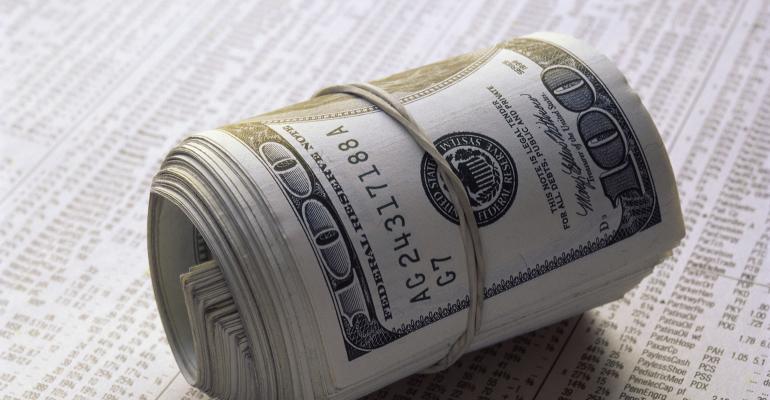After an uneven 2020, and amid fears of an inflation-led bear market, promising opportunities should still beckon to credit investors who can look past short-term headline risk.
The economy and consumer spending should grow significantly. Our forecast for U.S. real GDP growth is 6.5% for 2021, and 4% for 2022. Corporate earnings are poised to skyrocket. For Q4 2020, S&P 500 companies are reporting earnings growth of 4% and growth in revenues of 3.2%. For Q1 2021, Wall Street analysts project earnings growth of 22.6% and revenue growth of 6.2%. We predict 16% earnings growth for 2021.
Plentiful fiscal stimulus, coupled with vibrant expected economic growth as the COVID-19 pandemic lockdown subsides, should create a period of reflation peaking early, consistent with past recoveries. The U.S. Federal Reserve’s outlook for inflation rising to 2%-plus for 2021–2023 is based on substantially rising U.S. GDP and improved employment.
Yet long-term headwinds such as demographics and technology make runaway inflation unlikely. This should provide ample investment opportunities in global fixed income—but thorough understanding of sector and security fundamentals will be key.
Credit markets have accepted the prospect of higher inflation, but it all depends on the steepening of the yield curve. Our expectation is for the U.S. nominal 10-year interest rate in 2021 to be about 1.5%, and 2% for 2022. We believe the 10-year’s destination is the low- to mid-2% range, although how quickly that happens will be governed by employment data and potentially SLR regulations.
Even with the rise in 10-year U.S. Treasury bond yields, Federal Reserve Chairman Jerome H. Powell has repeatedly emphasized his commitment to accommodative financial conditions. He appears at ease with the recent curve steepening. If rates rise for the right reason—economic growth—it will support Powell’s thesis and outlook. Fed policy remains very accommodative to current financial conditions.
But the Fed stands poised to act if market movements become unruly or crimp credit conditions.
Credit markets have responded better than expected to recent rate movements. This leads us to believe that recent rate volatility is more linked to equity market volatility, given how concentrated the high-yield market has become in daily liquidity vehicles, approximately 40%, coupled with the unrelenting yearning for income and yield.
There can be tremendously high pricing volatility and gap risk with ETFs and open-end mutual funds, which can in turn create a domino effect across the market in security pricing as investors typically flock to sell the highest bid and most liquid security in times of stress.
Nimble multiasset class credit solutions have become appealing means to diversify traditional fixed income portfolios. This portfolio allocation mix can provide more near-term relative value opportunities and flexibility given that the U.S. High Yield spread is at 343 basis points, and the Leveraged Loan 100 Index spread is at 345. Both are at the tight end of historical norms, meaning investors in publicly traded assets are not getting much compensation for potentially increased risk, although the high-yield market now comprises higher quality credits due to fallen angels in 2020. This market may test investors’ appetites to be patient.
Yet we continue to see pockets of opportunity across the risk spectrum. The difference versus one year ago is the opportunity set is less obvious and not sitting at the surface. The market is reverting to complexity as opposed to simplicity.
Travel and leisure in the high-yield market is a great example. The industry experienced a severe sell-off in March 2020. To survive, publicly traded cruise lines—such as Carnival and Viking—repeatedly tapped the capital markets with help from the Fed to extend their liquidity runways and take advantage of historically low borrowing costs. Larger issuers in storied sectors are benefiting from the historic federal backstop in credit markets but also positioning for the long-awaited reopening effect. Cruise lines were among the top high-yield bond performers in 2020.
Overall, 2020 brought an increased level of subsector dispersion. While much of that has dissipated, getting back to the ground level through active management is necessary to find sufficient yield and income. Solid credit selection is crucial.
Areas of potential opportunities include selected credit investments in cyclicals, asset-based deals with the stability of durable cash flows and consumer discretionary plays that will benefit in the post-lockdown world.
If there is a disconnect in our thesis, it is that the U.S. dollar continues to appreciate, which could hurt commodities and emerging markets and tighten financial conditions. However, given that we are starting with real yields at -65 basis points on the 10-year, and the dollar already fell substantially, we think risk and growth assets are generally headed higher, albeit with more volatility.
We continue to find attractive opportunities in credit, but they are not obvious. We are back to investing in complexity, having left most of the simplicity behind in 2020. This market’s direction has forever changed course.
Chris Sheldon is partner and head of leveraged credit, KKR.
